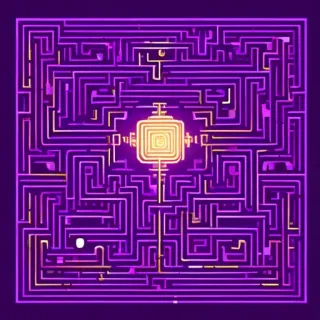
Zero-Knowledge Location Privacy Technology Introduced
/ 3 min read
Quick take - The introduction of Zero-Knowledge Location Privacy (ZKLP) marks a significant advancement in privacy technology, enabling users to validate their presence in a geographic area without revealing their exact location, while incorporating efficient floating-point arithmetic and various optimizations for practical applications.
Fast Facts
- Zero-Knowledge Location Privacy (ZKLP) allows users to validate their presence in a geographic area without revealing their exact location, enhancing privacy technology.
- The first Zero-Knowledge Proof (ZKP) circuits compliant with IEEE 754 for floating-point arithmetic have been introduced, showcasing significant efficiency improvements.
- A privacy-preserving peer-to-peer proximity testing protocol demonstrates ZKLP’s practical application, allowing users to confirm proximity quickly without disclosing precise location data.
- The integration of a Discrete Global Grid System (DGGS) obscures exact coordinates while ensuring verifiability, further enhancing privacy.
- ZKLP has potential limitations, such as the risk of malicious users falsifying location data, with suggested solutions provided in an accompanying appendix.
Introduction of Zero-Knowledge Location Privacy Marks Significant Advancement in Privacy Technology
The introduction of Zero-Knowledge Location Privacy (ZKLP) represents a major advancement in privacy technology. This innovation allows users to validate their presence within a specific geographic area without disclosing their exact location. ZKLP supports various levels of granularity, enabling tailored applications based on distinct use cases.
Efficiency of Zero-Knowledge Proof Circuits
Recently, the first set of Zero-Knowledge Proof (ZKP) circuits adhering to the IEEE 754 standard for floating-point arithmetic has been unveiled. These circuits showcase remarkable efficiency, requiring only 64 constraints per multiplication for 215 single-precision floating-point multiplications. This highlights a substantial reduction in computational complexity. Optimized implementations of these circuits demonstrate a drastic decrease in constraints, with 15.9 times fewer constraints for single precision and 12.2 times fewer for double precision compared to a baseline.
Practical Applications and Enhancements
A key practical application of ZKLP is illustrated through a privacy-preserving peer-to-peer proximity testing protocol. This protocol enables users to confirm proximity without revealing their precise location data. In this proximity testing scenario, the efficiency of the protocol is evident: Bob can generate a proof of (non-)proximity in just 0.26 seconds, while Alice can verify her distance to approximately 470 peers per second.
The integration of floating-point arithmetic into SNARK circuits is another focal point of this development, ensuring both precision and efficiency for applications requiring geographic data. To enhance privacy further, a Discrete Global Grid System (DGGS) utilizing hexagonal cells is employed, obscuring exact location coordinates in a verifiable manner. Full compliance with IEEE 754 has been confirmed through rigorous testing using the Berkeley TestFloat library.
The ZKLP protocol incorporates various optimizations, including the use of lookup arguments and nondeterministic programming, facilitating the efficient management of complex floating-point operations. However, it is important to note that ZKLP has limitations, such as the potential for malicious users to falsify location data. Suggested solutions to address these concerns are provided in an accompanying appendix.
ZKLP’s applications extend across several location-based services, including contact tracing and geolocation services, where privacy is paramount. The protocol has undergone full implementation and testing, with open-source code made available to ensure reproducibility, including a comprehensive test suite based on the IEEE 754 standard.
An empirical evaluation of the study has been conducted, assessing performance, optimization effectiveness, and practical usability. AWS was utilized for runtime and memory consumption analysis of ZKLP circuits. The protocol’s architecture features optimizations such as lookup tables and nondeterministic programming, significantly improving the handling of floating-point computations, particularly for range checks and logical operations that are not natively supported by arithmetic circuits.
Original Source: Read the Full Article Here


